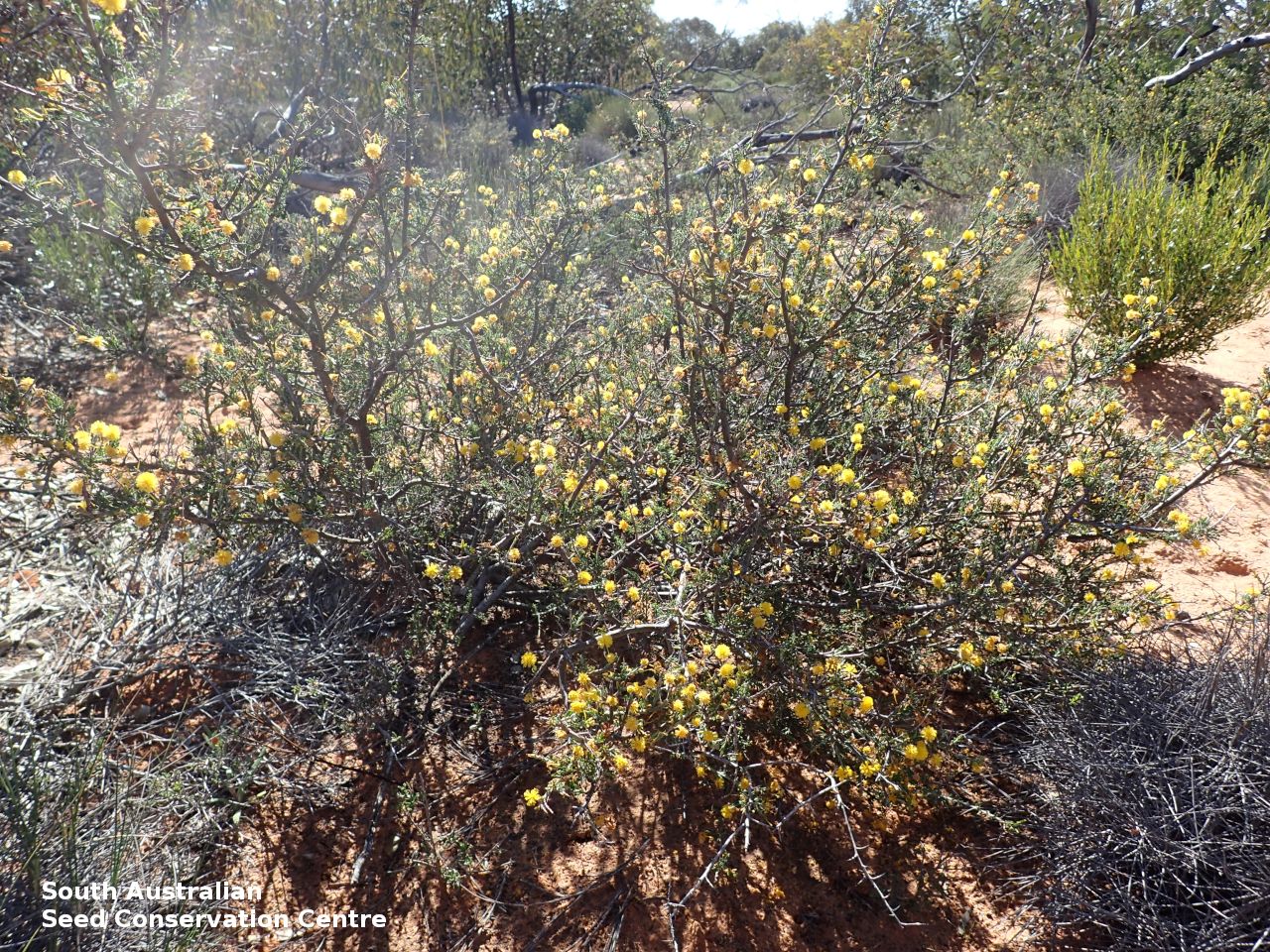
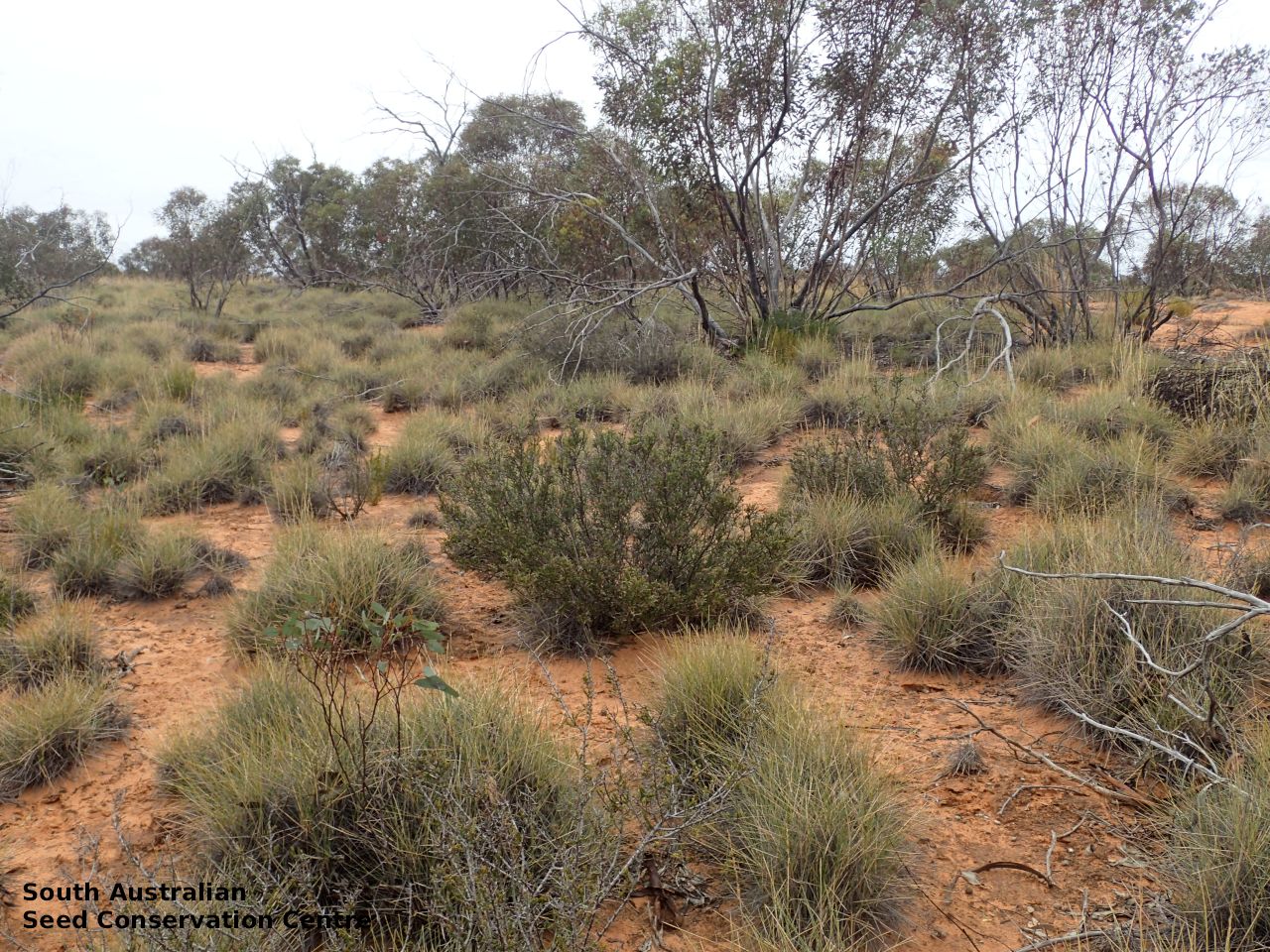
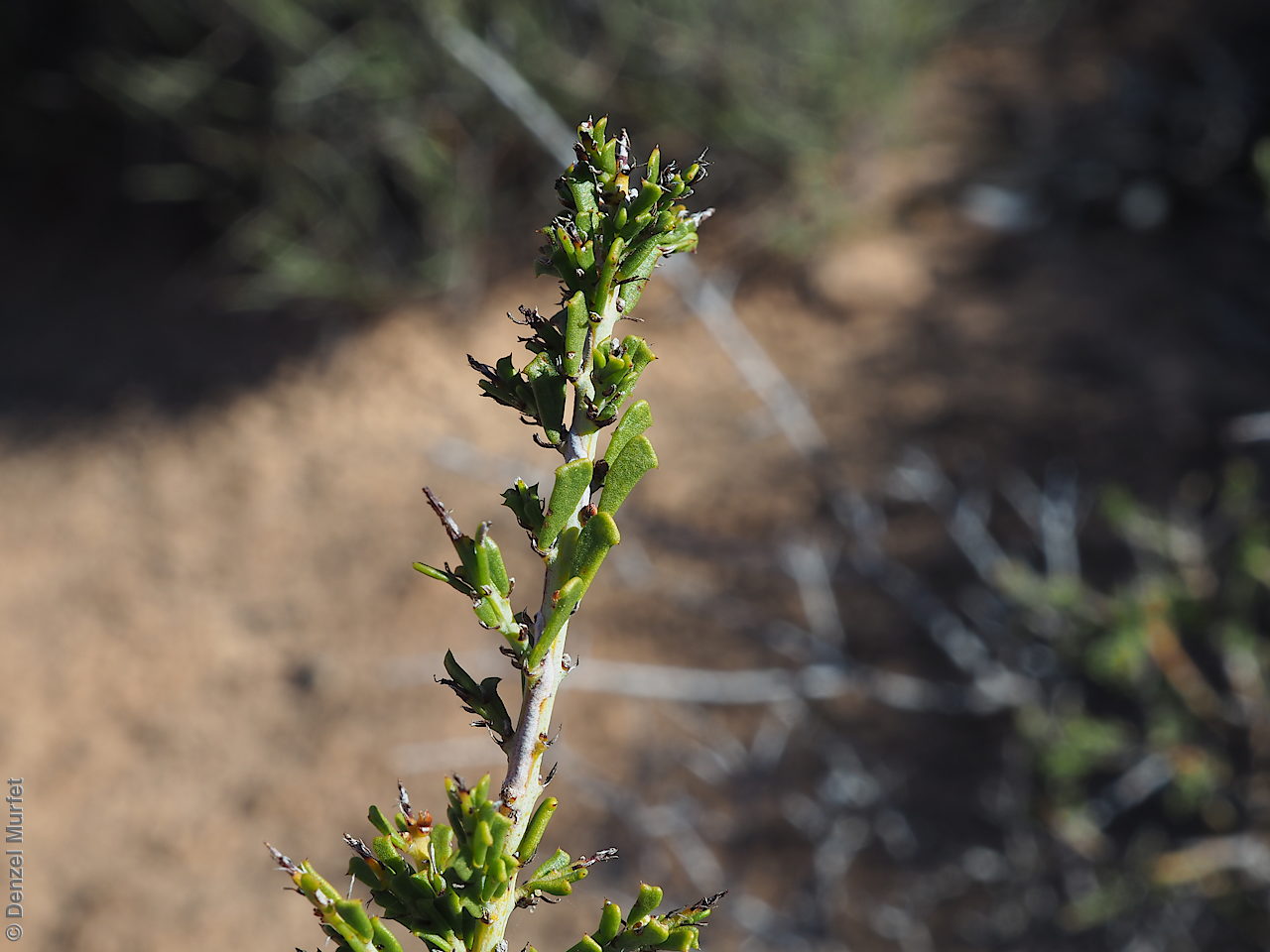
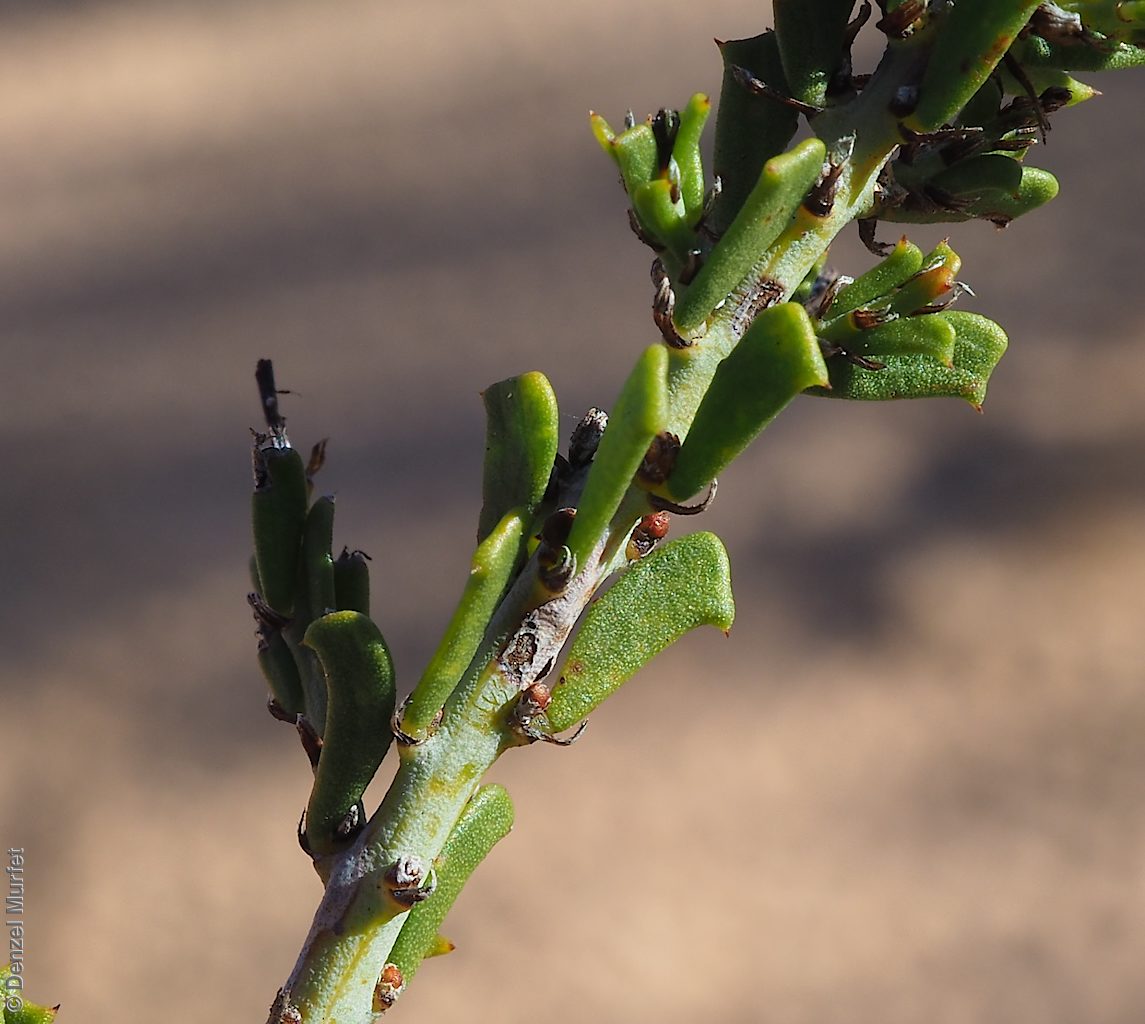
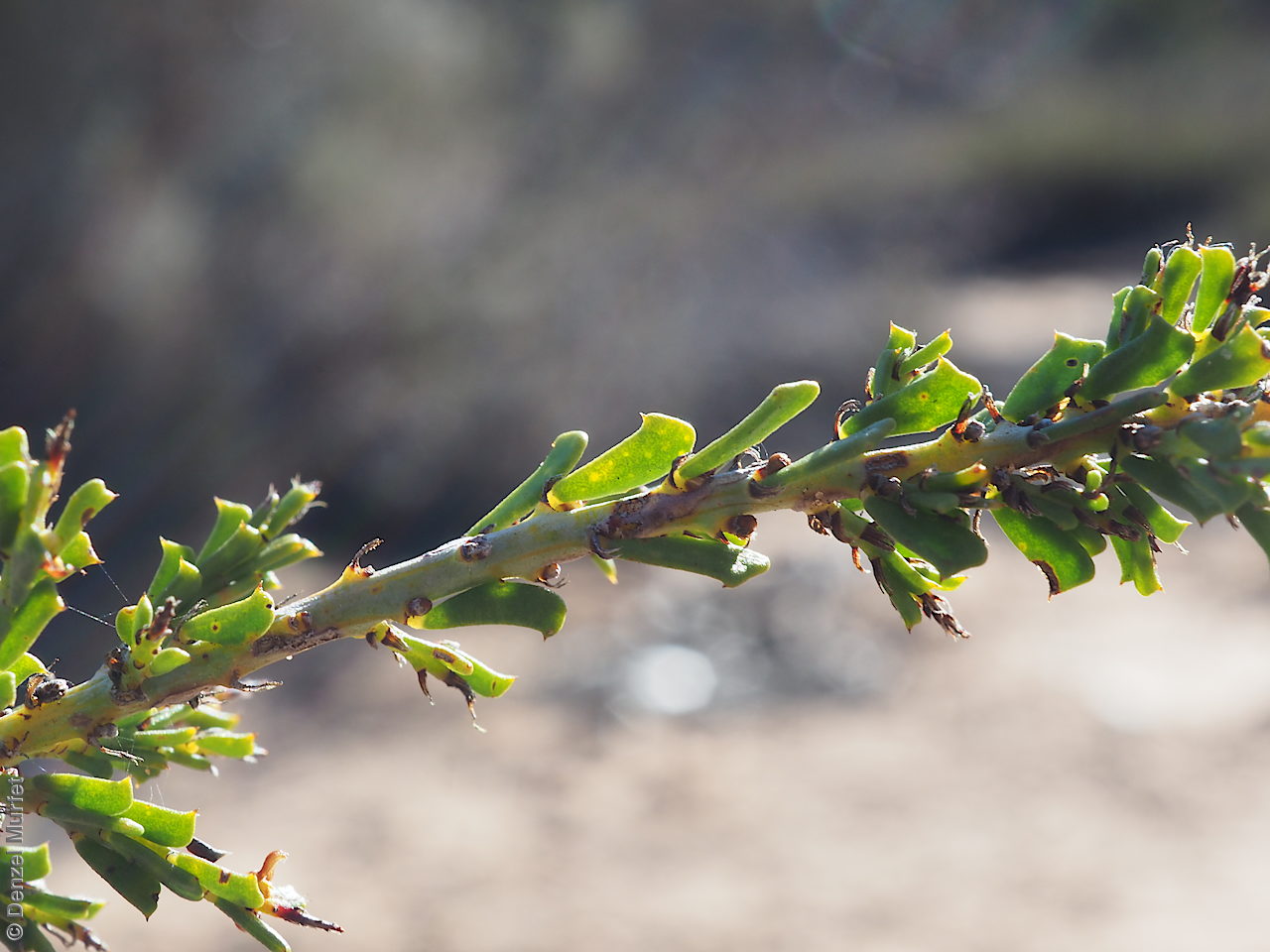
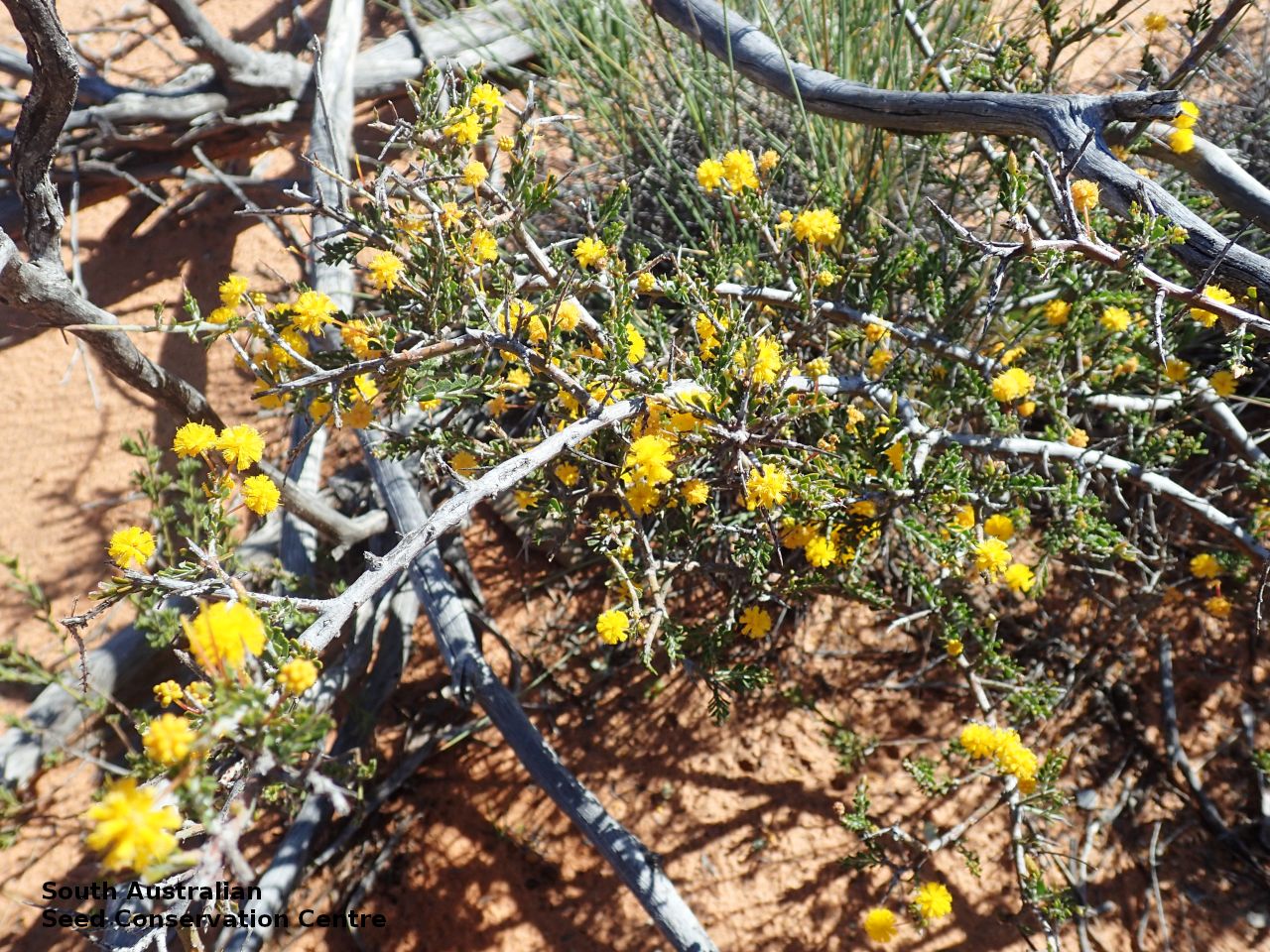
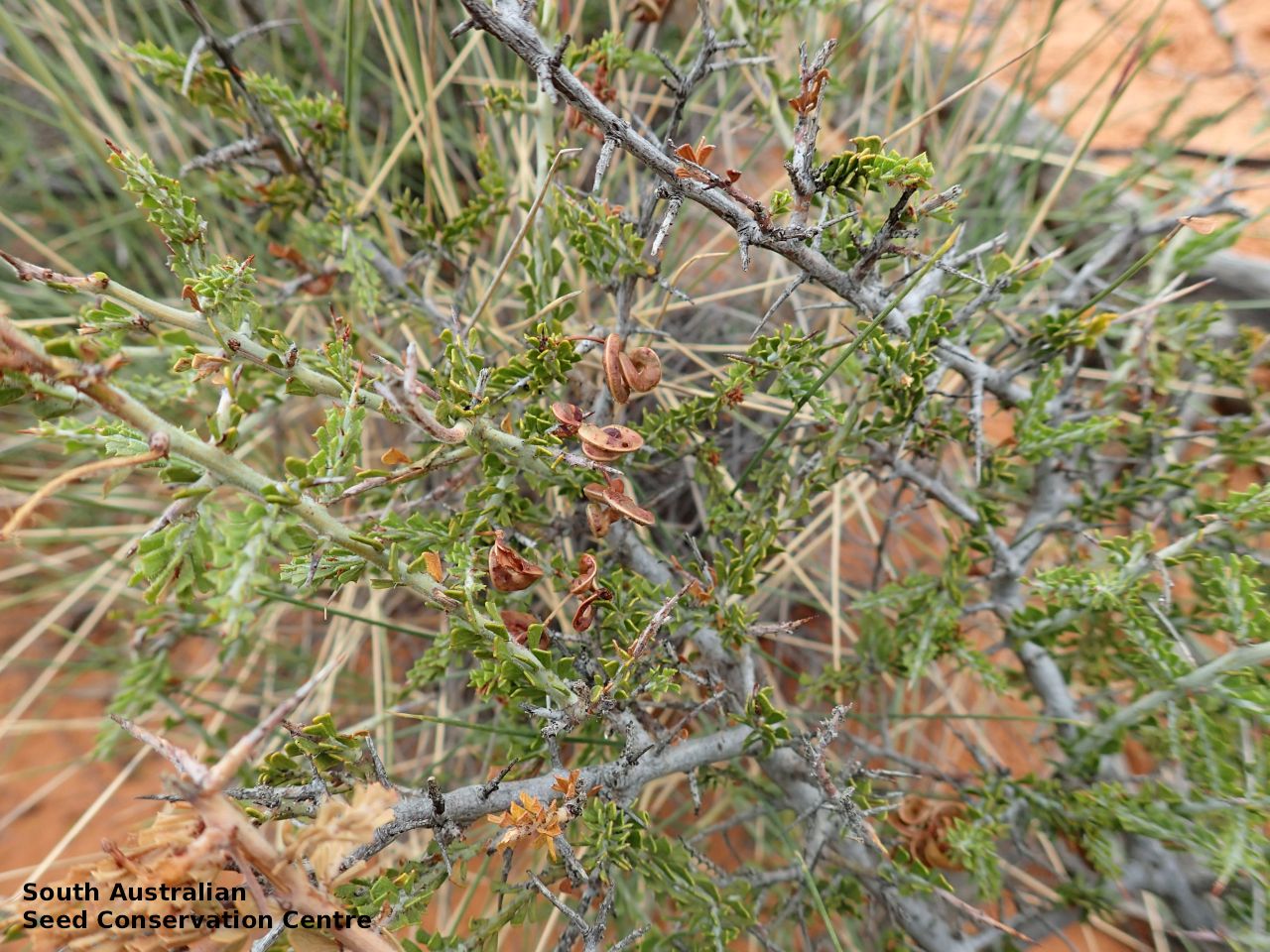

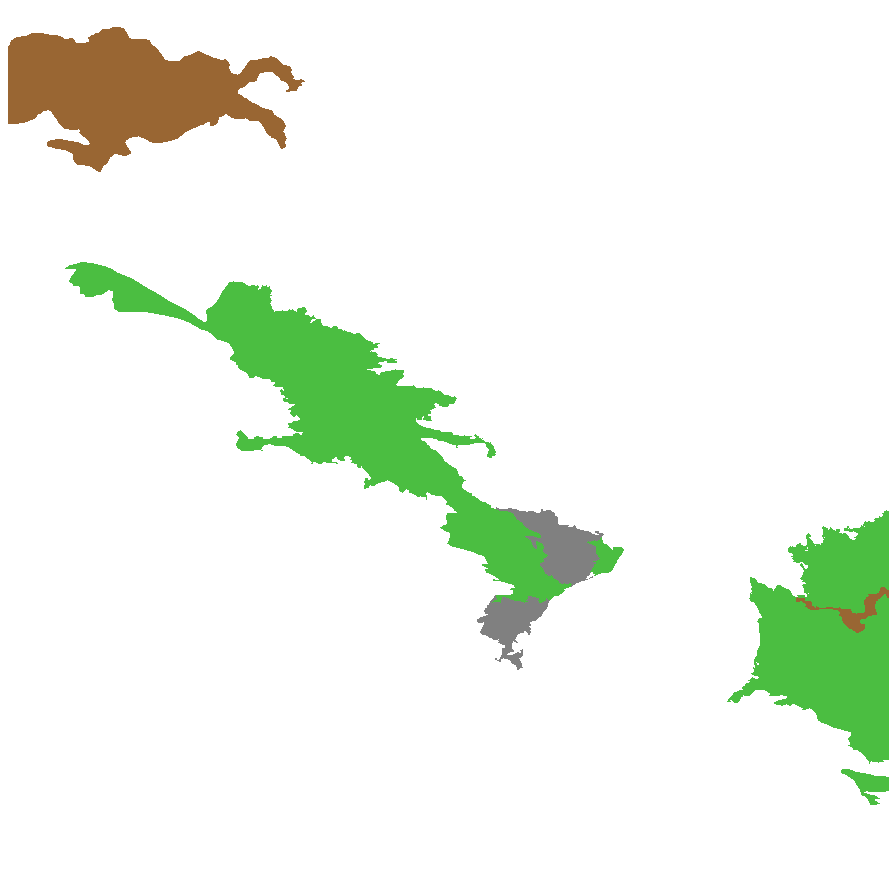
Botanical art
Prior names
Acacia acanthoclada
Common names
Harrow Wattle
Mirrinytji
Etymology
Acacia from the Greek 'akakia' and derived from 'ake' or 'akis' meaning a sharp point or thorn and 'akazo' meaning to sharpen. Dioscorides, the Greek physician and botanist used the word in the 1st century AD for the Egyptian thorn tree, Acacia arabica. Acanthoclada from the Greek 'akantha' meaning thorn and 'kladion', from 'klados' meaning a branch, referring to the spine at the end of the branchlets.
Distribution and status
Found scattered in the north-western corner of South Australia through the upper Eyre Peninsula to the main distribution in the Murray region, growing in open mallee scrub associated with Eucalyptus socialis and Eucalyptus gracilis on deep red sandy soil, on low sand hills and undulating plains. Also found in Western Australia, New South Wales and Victoria. Native. Uncommon in South Australia. Rare in New South Wales. Uncommon in Victoria. Common in Western Australia.
Herbarium regions: North Western, Nullarbor, Eyre Peninsula, Murray
NRM regions: Alinytjara Wilurara, Eyre Peninsula, South Australian Murray-Darling Basin
AVH map: SA distribution map (external link)
Plant description
Stiff, intricate, spreading shrub to 2 m high with smooth, grey or occasionally slightly greenish bark. Branchlets short, straight, rigid, with spines and covered in dense hairs. Leaves more or less erect, straight, to 6 mm long and 3 mm wide, hairy with1 or sometimes 2 longitudinal veins,1 minute gland, often appearing absent, at about halfway or sometimes more along margin. Inflorescences single in axil of leaves with bright yellow globular flowers. Flowering between August and October. Fruits are dark brown twisted or coiled pod to 60 mm long and 3 mm wide, slightly constricted between seeds. Seed embryo type is investing.
Seed collection and propagation
Collect seeds between October and January. Collect mature pods that are turning brown with hard, dark seeds inside. Be careful as the bushes are spiny. Place the pods in a tray and leave to dry for 1-2 weeks or until the pods begin to split. Then rub the dried pods to dislodge the seeds. Use a sieve to separate any unwanted material. Store the seeds with a desiccant such as dried silica beads or dry rice, in an air tight container in a cool and dry place. This species has physical dormancy that needs to be overcome for the seed to germinate (e.g. nicking or softening the seed coat).